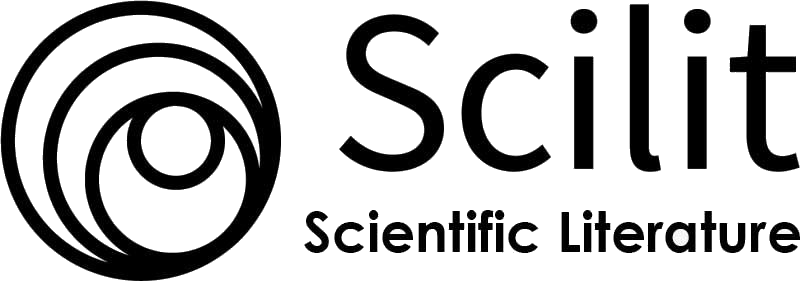Mapping the Risks: A GIS-Based Study of Factors Associated with Paediatric Burn Admissions in a Kenyan Referral Hospital
DOI:
https://doi.org/10.58425/jphs.v4i1.381Keywords:
Pediatric burns, Geographic Information System (GIS), burn prevention, first-aid, KenyaAbstract
Aim: To assess factors contributing to burns among children admitted to a national referral hospital in Kenya, with a focus on Geographical Information System (GIS) tools to map and analyze spatial factors related to burn injuries.
Methods: This cross-sectional survey collected data using questionnaires from children with burns, their parents/guardians, and conducted key informant interviews and focused group discussions with doctors and nurses. The calculation of the sample used Fisher’s formula, involving 235 children (18 years and below) and their parents/guardians, as well as seven key informants. Quantitative data was analyzed using SPSS (Statistical Package for the Social Sciences). Qualitative data were grouped thematically, coded and analyzed, and some were quoted directly. Global information system coordinates were used to map hospitals, road networks and residences of respondents.
Results: Occurrence of burns was influenced by gender (54% males) and age (below two years were 31.5%). Scalds were the most common type of burn (51.1%), including hot water (42.3%), hot food (6.4%), and hot oil (2.4%). Burns occurred most frequently indoors, particularly in overcrowded homes lacking separate cooking areas and inadequate playgrounds, and 74.3% were preventable. Although 55.3% children received first aid, most were unscientific and harmful. Delayed first-aid and initiation of burn treatment arose in 83% due to lack of money, traffic jams, ignorance, transport used (including wheelbarrows), preferred treatment facilities, unavailability of burn centres nearby and waiting for referral letters (delayed referral). Most children were from environs near the study site (73.2%), others from nearby counties, while others were from far losing the golden hour.
Conclusions: This study identified key sociodemographic and environmental contributors to pediatric burns and highlighted significant spatial barriers to timely care. The Global Information System was successfully used to visualize patterns of injury occurrence and healthcare access.
Recommendations: There should be continuous training on burn prevention and first-aid, establishment of burn centers in all counties, and integration of GIS into health planning to establish trends and improve access to timely burn care.
References
Abedipour, M., Tavasouli, A., Sobouti, B., Mansourimanesh, M., Saeedi Eslami, N., & Bodaghy Alny, M. (2014). Frequency and causes of seizure among hospitalized burned children. Burns: Journal of the International Society for Burn Injuries, 40(4), 737–743. https://doi.org/10.1016/j.burns.2013.09.018
Agrawal, S. (2013, October 25). Golden hour in Trauma. ResearchGate; unknown. https://www.researchgate.net/publication/258844285_Golden_hour_in_Trauma
Akhtar, M. S. (2012). Electrical burns in children: An experience. 20(1), 30–35. https://www.researchgate.net/publication/266202424_Electrical_burns_in_children_An_experience
Arbuthnot, M. K., & Garcia, A. V. (2019). Early resuscitation and management of severe pediatric burns. Seminars in Pediatric Surgery, 28(1), 73–78. https://doi.org/10.1053/j.sempedsurg.2019.01.013
Asenahabi, B.M & Peters, N. (2023). Scientific Research Sample Size Determination. International Journal of Science & Technoledge, 11(7). https://doi.org/10.24940/theijst/2023/v11/i7/st2307-008
Barrios, E. L., Polcz, V. E., Moldawer, L. L., Rincon, J. C., Efron, P. A., & Larson, S. D. (2022). Variables Influencing the Differential Host Response To Burns In Pediatric And Adult Patients. Shock, 59(2), 145–154. https://doi.org/10.1097/shk.0000000000002042
Başaran, A., & Özlü, Ö. (2022). Pediatric burns and the leading factors of burn injury. Genel Tıp Dergisi, 32(2), 109–113. https://doi.org/10.54005/geneltip.1002395
Bonaccio, S., Connelly, C. E., Gellatly, I. R., Jetha, A., & Martin Ginis, K. A. (2020). The participation of people with disabilities in the workplace across the employment cycle: Employer concerns and research evidence. Journal of Business and Psychology, 35(35). https://link.springer.com/article/10.1007/s10869-018-9602-5
Bubb, L., & Masters, J. (2023). Trauma and burns in children. Anaesthesia & Intensive Care Medicine. https://doi.org/10.1016/j.mpaic.2023.08.005
Burdick, K. J., Coulter, A. P., & Tirabassi, M. (2023). Prehospital Transport Time and Outcomes for Pediatric Trauma: A National Study. Journal of Surgical Research, 292, 144–149. https://doi.org/10.1016/j.jss.2023.07.041
Children’s Burns in the Home. (2025). https://kidsafe.com.au/wp-content/uploads/2019/05/RP174-Kidsafe_BurnSafe-Brochure.Home_Digital-1-1.pdf
Chua, M., Teague, W. J., & Tracy, L. M. (2025). The Causes, Characteristics and Outcomes of Paediatric Farm Burns in Australia and New Zealand. Australian Journal of Rural Health, 33(1). https://doi.org/10.1111/ajr.70003
Cuttle, L., Fear, M., Wood, F. M., Kimble, R. M., & Holland, A. J. A. (2022). Management of non-severe burn wounds in children and adolescents: optimising outcomes through all stages of the patient journey. The Lancet Child & Adolescent Health, 6(4), 269–278. https://doi.org/10.1016/s2352-4642(21)00350-3
D’Cruz, R., Pang, T. C. Y., Harvey, J. G., & Holland, A. J. A. (2015). Chemical burns in children: Aetiology and prevention. Burns, 41(4), 764–769. https://doi.org/10.1016/j.burns.2014.10.020
Edirisinghe, N. K., Dalpatadu, S. A. C., & Dissanayake, T. S. (2022). A study of the knowledge of choking, burns, acute poisoning and their first aid practices among mothers of children below 14 years of age attending the District General Hospital, Kalutara. Sri Lanka Journal of Child Health, 51(2), 235. https://doi.org/10.4038/sljch.v51i2.10124
Farhad Yeroshalmi, Sidoti, E. J., Adamo, A. K., Lieberman, B. L., & Badner, V. M. (2011). Oral Electrical Burns in Children—A Model of Multidisciplinary Care. Journal of Burn Care & Research, 32(2), e25–e30. https://doi.org/10.1097/bcr.0b013e31820ab393
Gbemisola. (2017, September 7). CONVULSIONS IN CHILDREN – WHAT TO AND WHAT NOT TO DO! (2). Ask the Paediatricians Foundation. https://askthepaediatricians.com/2017/09/convulsions-children-not-2/
Hilarión Castañeda-Rodríguez, López-Segura, E., Rocío Muñoz-Sandoval, Gutiérrez-Tenorio, O. F., & Marquez-Romero, J. M. (2024). Efficacy of a Burn Prevention Educational Program to Diminish the Incidence of Burn Injuries in the Pediatric Age. Burns, 50(9), 107279–107279. https://doi.org/10.1016/j.burns.2024.09.018
Jagoe, C., McDonald, C., Rivas, M., & Groce, N. (2021). Direct participation of people with communication disabilities in research on poverty and disabilities in low and middle-income countries: A critical review. PLOS ONE, 16(10), e0258575. https://doi.org/10.1371/journal.pone.0258575
Jeschke, M. G., Mlcak, R. P., Finnerty, C. C., Norbury, W. B., Przkora, R., Kulp, G. A., Gauglitz, G. G., Zhang, X.-J., & Herndon, D. N. (2008). Gender Differences in Pediatric Burn Patients. Annals of Surgery, 248(1), 126–136. https://doi.org/10.1097/sla.0b013e318176c4b3
Joffe, M. D. (2025). UpToDate. Www.uptodate.com. https://www.uptodate.com/contents/moderate-and-severe-thermal-burns-in-children-emergency-management
Jordan, K. C., Di Gennaro, J. L., von Saint André-von Arnim, A., & Stewart, B. T. (2022). Global trends in pediatric burn injuries and care capacity from the World Health Organization Global Burn Registry. Frontiers in Pediatrics, 10. https://doi.org/10.3389/fped.2022.954995
Kawalec, A., & Pawlas, K. (2020). Home environment and burns in children. Burns Open. https://doi.org/10.1016/j.burnso.2020.05.006
Khalid Alnababtah, & Khan, S. (2017). Socio-demographic factors that significantly relate to the prediction of burns severity in children. International Journal of Burns and Trauma, 7(5), 56–63. https://www.researchgate.net/publication/320452839_Socio-demographic_factors_which_significantly_relate_to_the_prediction_of_burns_severity_in_children
Kotecha, V. R., Opot, N. E., & Nangole, F. (2022). Assessment and Management of Pain in Patients Sustaining Burns at Emergency Department Kenyatta National Hospital, Kenya: A Descriptive Study. Trauma Care, 2(1), 79–86. https://doi.org/10.3390/traumacare2010007
Lee, J., Higginson, S., Strait, E., Santorelli, J. E., Smith, A., Costantini, T., Doucet, J., & Godat, L. N. (2021). 84 Pediatric Scald Burns: Using Geographic Information Systems to Identify High-Risk Communities. Journal of Burn Care & Research, 42(Supplement_1), S58–S59. https://doi.org/10.1093/jbcr/irab032.088
Lewis, J. E., Patel, M. M., Lim, S. E., Wolf, S. E., & Song, J. (2024). Unveiling Sex Differences in Pediatric Burns through the World Health Organization (WHO) Global Burn Registry. Journal of Pediatric Surgery, 161973–161973. https://doi.org/10.1016/j.jpedsurg.2024.161973
Mehta, K., Arega, H., Smith, N. L., Li, K., Gause, E., Lee, J., & Stewart, B. (2022). Gender-based disparities in burn injuries, care and outcomes: A World Health Organization (WHO) Global Burn Registry cohort study. The American Journal of Surgery, 223(1), 157–163. https://doi.org/10.1016/j.amjsurg.2021.07.041
Mukhdomi, G. J., Desai, M. H., & Herndon, D. N. (1996). Seizure disorders in burned children: a retrospective review. Burns, 22(4), 316–319. https://doi.org/10.1016/0305-4179(95)00013-5
Nassar, J., Qurashi, A., Ibrahim Altedlawi Albalawi, Nukaly, H. Y., Halawani, I. R., Abumelha, A. F., Dwehji, A., Alhartani, M. M., Asaad, A., Arwa Alnajashi, & Imad Khojah. (2023). Pediatric Burns: A Systematic Review and Meta-Analysis on Epidemiology, Gender Distribution, Risk Factors, Management, and Outcomes in Emergency Departments. Cureus. https://doi.org/10.7759/cureus.49012
Ndiritu, S., Ngum, Z., & Nyaim, O. (2006). Burns: The epidemiological pattern, risk and safety awareness at Kenyatta National Hospital, Nairobi. East African Medical Journal, 83(8). https://doi.org/10.4314/eamj.v83i8.9462
Nthumba, P. M. (2016). Burns in sub-Saharan Africa: A review. Burns, 42(2), 258–266. https://doi.org/10.1016/j.burns.2015.04.006
Odondi, R. N., Shitsinzi, R., & Emarah, A. (2020). Clinical patterns and early outcomes of burn injuries in patients admitted at the Moi Teaching and Referral Hospital in Eldoret, Western Kenya. Heliyon, 6(3), e03629. https://doi.org/10.1016/j.heliyon.2020.e03629
Otteni, C. R., Saruni, S. I., Duron, V. P., Hedges, J. P., & White, R. E. (2013). Baseline Assessment of Inpatient Burn Care at Tenwek Hospital, Bomet, Kenya. World Journal of Surgery, 37(7), 1530–1535. https://doi.org/10.1007/s00268-013-2045-2
Pfautsch, S., Wujeska-Klause, A., & Walters, J. (2022). Outdoor playgrounds and climate change: Importance of surface materials and shade to extend play time and prevent burn injuries. Building and Environment, 223, 109500. https://doi.org/10.1016/j.buildenv.2022.109500
Qtait, M. (2025). Causes of Burn Injury in Children for Preschool. Journal of Evaluation in Clinical Practice, 31(3). https://doi.org/10.1111/jep.70054
Romanowski, K. S., & Palmieri, T. L. (2017). Pediatric burn resuscitation: past, present, and future. Burns & Trauma, 5(1). https://doi.org/10.1186/s41038-017-0091-y
Runyan, C. W., Casteel, C., Perkis, D., Black, C., Marshall, S. W., Johnson, R. M., Coyne-Beasley, T., Waller, A. E., & Viswanathan, S. (2005). Unintentional injuries in the home in the United States. American Journal of Preventive Medicine, 28(1), 73–79. https://doi.org/10.1016/j.amepre.2004.09.010
Schipperijn, J., Cathrine Damsbo Madsen, Mette Toftager, Danielle Nørager Johansen, Lousen, I., Thea Toft Amholt, & Charlotte Skau Pawlowski. (2024). The role of playgrounds in promoting children’s health – a scoping review. ˜the œInternational Journal of Behavioural Nutrition and Physical Activity, 21(1). https://doi.org/10.1186/s12966-024-01618-2
Slater, H., O’Mara, M. S., & Goldfarb, I. W. (2002). Helicopter transportation of burn patients. Burns, 28(1), 70–72. https://doi.org/10.1016/s0305-4179(01)00069-9
Srivastava, S., Patil, A., Bedi, M., & RS Tawar. (2017). Paediatric electrical burn injuries: experience from a tertiary care burns unit in North India. Annals of Burns and Fire Disasters, 30(3), 185. https://pmc.ncbi.nlm.nih.gov/articles/PMC5946754/
Suman, A., & Owen, J. (2020). Update on the management of burns in paediatrics. BJA Education, 20(3), 103–110. https://doi.org/10.1016/j.bjae.2019.12.002
Takei, I., Ito, T., Murata, M., Ide, T., & Nakahara, T. (2023). Burn Injury in Children: A Single-center Analysis of 100 Patients in Japan. Journal of Plastic and Reconstructive Surgery, 3(1). https://doi.org/10.53045/jprs.2023-0005
Toma, A., Voicu, D., Constantin Popazu, Mihalache, D., Duca, O., Dumitru Marius Dănilă, & Dan Mircea Enescu. (2024). Severity and Clinical Outcomes of Pediatric Burns—A Comprehensive Analysis of Influencing Factors. Journal of Personalized Medicine, 14(8), 788–788. https://doi.org/10.3390/jpm14080788
Wanjeri, J. K. (2019, January 22). Injuries from burns in Kenya mostly affect children and happen in homes. The Conversation. https://theconversation.com/injuries-from-burns-in-kenya-affect-mostly-children-and-happen-in-homes-109833
Wanjeri, J. K., Kinoti, M., & Olewe, T. H. A. M. (2018). Risk factors for burn injuries and fire safety awareness among patients hospitalized at a public hospital in Nairobi, Kenya: A case control study. Burns, 44(4), 962–968. https://doi.org/10.1016/j.burns.2017.11.007
Warner, P., Bailey, J. K., Bowers, L., Hermann, R., James, L. E., & McCall, J. E. (2016). Aeromedical Pediatric Burn Transportation. Journal of Burn Care & Research, 37(2), e181–e187. https://doi.org/10.1097/bcr.0000000000000198
Yelvington, M., Whitehead, C., & Turgeon, L. (2023). Special Considerations for Pediatric Burn Injuries. Physical Medicine and Rehabilitation Clinics of North America, 34(4), 825–837. https://doi.org/10.1016/j.pmr.2023.05.004
Yin, S. (2017). Chemical and Common Burns in Children. Clinical Pediatrics, 56(5_suppl), 8S12S. https://doi.org/10.1177/0009922817706975
Published
How to Cite
Issue
Section
License
Copyright (c) 2025 Christine Mwikali Musee, Loise N. Kahoro, Rhoda A. Onono, Rose Nyambura Ngure

This work is licensed under a Creative Commons Attribution 4.0 International License.
The authors retain the copyright and grant this journal right of first publication. This license allows other people to freely share and adapt the work but must give appropriate credit, provide a link to the license, and indicate if changes were made. They may do so in any reasonable manner, but not in any way that suggests the licensor endorses them or their use.










